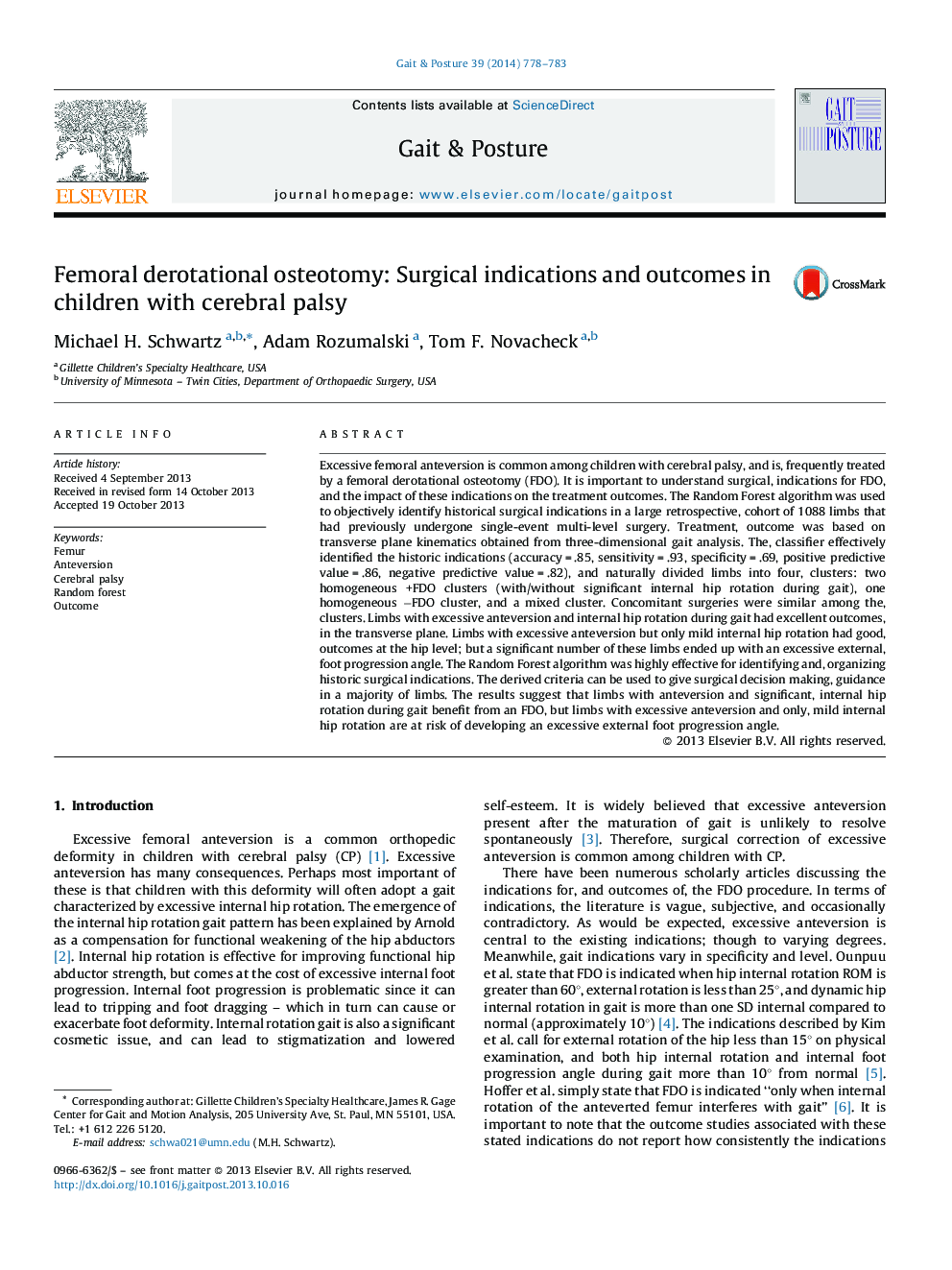| کد مقاله | کد نشریه | سال انتشار | مقاله انگلیسی | نسخه تمام متن |
|---|---|---|---|---|
| 6206403 | 1265646 | 2014 | 6 صفحه PDF | دانلود رایگان |
- This study accurately predicted who will receive a femoral derotational osteotomy (FDO) based on gait and physical examination data.
- The method was able to identify distinct subgroups based on preoperative characteristics.
- The gait outcomes differed by subgroup.
- The method suggests optimal indications for FDO.
Excessive femoral anteversion is common among children with cerebral palsy, and is, frequently treated by a femoral derotational osteotomy (FDO). It is important to understand surgical, indications for FDO, and the impact of these indications on the treatment outcomes. The Random Forest algorithm was used to objectively identify historical surgical indications in a large retrospective, cohort of 1088 limbs that had previously undergone single-event multi-level surgery. Treatment, outcome was based on transverse plane kinematics obtained from three-dimensional gait analysis. The, classifier effectively identified the historic indications (accuracy = .85, sensitivity = .93, specificity = .69, positive predictive value = .86, negative predictive value = .82), and naturally divided limbs into four, clusters: two homogeneous +FDO clusters (with/without significant internal hip rotation during gait), one homogeneous âFDO cluster, and a mixed cluster. Concomitant surgeries were similar among the, clusters. Limbs with excessive anteversion and internal hip rotation during gait had excellent outcomes, in the transverse plane. Limbs with excessive anteversion but only mild internal hip rotation had good, outcomes at the hip level; but a significant number of these limbs ended up with an excessive external, foot progression angle. The Random Forest algorithm was highly effective for identifying and, organizing historic surgical indications. The derived criteria can be used to give surgical decision making, guidance in a majority of limbs. The results suggest that limbs with anteversion and significant, internal hip rotation during gait benefit from an FDO, but limbs with excessive anteversion and only, mild internal hip rotation are at risk of developing an excessive external foot progression angle.
Journal: Gait & Posture - Volume 39, Issue 2, February 2014, Pages 778-783
